 |
 |
 |
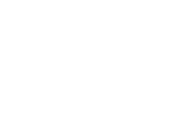
|
Bowl of volcanic glass (Obsidian) from Ur, southern Iraq; Early Dynastic period, ca. 2600-2400 BC; from the tomb of Queen Pu-abi.
©The British Museum
|
|
 |
THE TECHNIQUE OF TRANSPARENCY (PART 2)
-hidden glass
On my e-tablet’s Gorilla glass writing a proposal for a lecture on the history of glass, I discovered many hidden glass techniques that help us understand modern and contemporary glass. "To know history is to understand the future or, as The Circle of Ancient Iranian Studies/CAIS says: "History is the Light on the Path to the Future".
Reading on a tablet and using the world wide web might be modern, but already existed in the last ice age when established networks ran from Northern Europe via the Amber route across the Alps and through northern Italy to Rome and extended further South and East through Austria as the Royal Roads to Anatolia and Mesopotamia, India and China. (J. P. Campbell and Sherrard, the glass Curtain about the history of exchange of civilization between Europe and Asia, 1965).
|

|
Posted 1 February 2015
|
Share this:
|
|
Early glass was traded through the silk routes: glass from the West was called boli and liuli was the glass from China. On the trade routes from North to South, later called the "salt road", later the “glass route” and from West to East by an extensive tunnel system in southern Europe, the Erdstall tunnels were laid out in the stone age, when many people and types of mining transported raw materials such as obsidian, amber, asbestos, gold, copper, silver, cobalt, salt and glass.
As well, the legendary, global Agarthi-tunnel system was a network that connected all continents. One of the entrances would be found underneath the Tower of Glastonbury (United Kingdom of Great Britain) capital of "The Glass Island".
Globalization could begin! After 14,000 BC, obsidian known as volcanic glass was transported from Cappadocia and Bingöl, now South-Eastern Turkey, to Mesopotamia via the Levant Corridor and also was found in Russia to the far east. These materials served as weapons, and as tools to select and process beads or objects, as well as tools such as a surgical knife and others for drilling and grinding other materials such as rock crystal.
The Harry Ransom Center, at the University of Texas, in Austin explains that clay tablets are imprinted: “In the beginning, all writing was a form of accounting. As people developed agriculture, settled into towns, and began trading goods, they needed a way of keeping records of their exchanges. The first account records were small, marked clay tokens that represented quantities of various products, whether numbers of sheep, bags of grain, or loaves of bread. These counters date back 9000 years BCE to pre-historic Mesopotamia.
Some 6,000 years ago, the waters of the Mediterranean and the Black Sea rose as ice melted, however, before this it was possible to travel over land into Mesopotamia where agricultural communities had developed and social status was visible in the architecture and formation of city states.
Egyptian paste, a kind of faience, developed around that time from a mixture of ground Lapis Lazuli, ground quartz pebbles or sand, lime, soda and potash, and as the colour blue was baked it formed a layer of glass onto the surface. After crushing the glass frit, the paste made of this powder was formed by hand or in a mould and then baked. Also faience pigments were created from copper, hammered bronze scale and rust. Manufacturing techniques for pastes and pigments from local or imported materials like lead and copper, glass frit, potash from salt plants and metalworking were developed in one place and were transformed by cross-fertilization.
P.T. Nicholson wrote in his book Egyptian faience and glass (1998) that there is a close link in resemblance in the formulations of the faience glaze and contemporary glass compositions. Despite the differences in the pyrotechnology of glass and faience, the latter is first cold processed then baked at a low temperature. Archaeological evidence suggests that the glass and faience from the New Kingdom were carried out in the same workshops.
Glass at that time was an elite material: priceless. So, the cost around the year zero, of a transparent glass table ornament for Nero, was according to Pliny 6,000 sesterces or $ 250,000.
|
|
|
|
|

|

|

|
Cobalt was found only in combination with nickel, copper and silver on sites where mining was established. After gaining the residue of silver melting, this cobalt glass was melted and formed then submerged into cold water, this shock broke the glass into frit. Next, frit was ground into powder or melted into glass, a technique used and controlled in the 3rd millennium BC. This glass found its way from the Ertzgebirge in Central Europe towards the Levant.
|
|
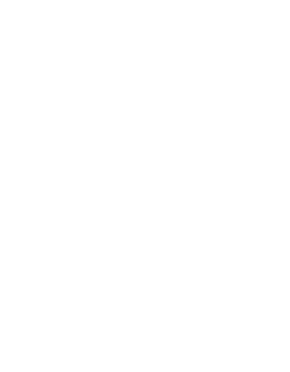
Astarte of Ishtar, West Asia, possibly northern Syria; Pendant in the shape of a woman, possibly the goddess Astarte from the Near East, ca. 1500 B.C.; blue glass, poured into an open mold in one piece; increased print of the mold on the right side of the shoulder, probably by the fire polishing; pressure traces at the bottom; length 7.7 cm (3 inches).
©Toledo Museum of Art, gift of Edward Drummond Libbey, 1923.195
|
|
|
|
|

|

|

|
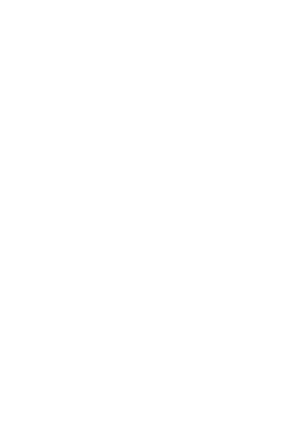
Li Xiaofeng, Beijing Memory No. 5, shards from the Qing period, 2009; 110 x 70 x 65 cm.
©Red Gate Gallery, Beijing www.redgategallery.com
|
|
Sumerian writing on clay tablets developed while the palaces and ziggurats or temple towers were decorated with baked, glazed reliefs made from sun-dried clay building blocks.
A glaze is a skin or layer of a glass powder that when fused by heat forms a glaze on a stone or ceramic object that adds colour or decoration and reinforces the object with a waterproof layer. Sun-dried building blocks of clay were dipped in tempered glaze then baked.
NB: Glazing is important for earthenware vessels as otherwise they would be unsuitable for holding liquids due to porosity. Glaze is also used on stoneware and porcelain. In addition to the functional aspect of glazes, they can form a variety of surface finishes, including degrees of gloss and matte and color. Glazes may also enhance an underlying design or texture which may be either the unmodified texture of the underlying body, or an inscribed, carved or painted design. Wikipedia
The wheel was invented here, as well as, the potter's wheel.
Animal drawn carts carried increasingly heavier loads, to Europe, India and, eventually to China by around 1200 BC, on a route ultimately known as the "Silk Road". Sail could reach all cities on the Mediterranean, India and China.
|
|
|
|
|
|
|
Glass types
There is general agreement on the interpretation of the two main types of soda-lime-silica glass. The high magnesia/high-kali-type glass was produced using a soda rich plant ash as a flux. The uses of such ashes were applied in the Near East and later the plants widely imported into Europe, used by, among others, the Venetian glass industry. Ashes were produced by burning plants with salt content derived from the desert or brackish waters containing significant amounts of potash and magnesium. Mixed with quartz rich sand or ground quartz pebbles results in this glass having calcined soda or plant-ash-glass. For the production of low-magnesia/low-potash-glass, a relatively pure inorganic or mineral soda source was used. Natron from Egypt according to Pliny was an important source of soda for glass, especially in the Wadi Natrun region, 50 km northwest of Cairo, where a sodium carbonate-mineral is deposited by water evaporating off the lakes. This glass type is called natron glass.
The Roman glass and later also the Anglo-Saxon glass, is composed primarily of low-magnesia/low-potash-natron glass. In the 8th or 9th century there were new glass compositions, rich in potassium oxide, appearing in northwest Europe. Source: authors Ian C. Freestone, Lucas Schachner, Andrew Shortland and Michael Tite of Natron as a Flux in the Early Vitreous Materials Industry: Sources, Beginnings and Reasons for Decline, Journal of Archaeological Science 33, Elsevier, 2006, p. 521-530 write about a defect in soda imported from Egypt due to political unrest during the 7th, 8th and 9th centuries when in Egypt switched to soda plants or Glasswort and, in Europe to potash rich ashes from the Salicornia Europaea. The potash rich composition reflects the use of the axis of domestic trees such as beech, in the manner described by Theophilus in the early 12th century. By time the natron glass in Northwest Europe was replaced, in the East sodium carbonate replaced natron, probably from a lack of natron resulting from events in the Delta of Egypt, according to Ian c. Freestone, Michael J. Hughes and Colleen p. Stapleton in The Composition and Production of Anglo-Saxon Glass (British Museum, 2008).
NB: The English word natron is a French cognate derived from the Spanish natrón through Greek vitpov nitron. This derives from the Ancient Egyptian word ntry 'natron'. Natron refers to Wadi El Natrun or Natron Valley in Egypt, from which natron was mined by the ancient Egyptians for use in burial rites. The modern chemical symbol for sodium, Na, is an abbreviation of that element's New Latin name natrium, which was derived from natron. Wikipedia
|
|
|
|
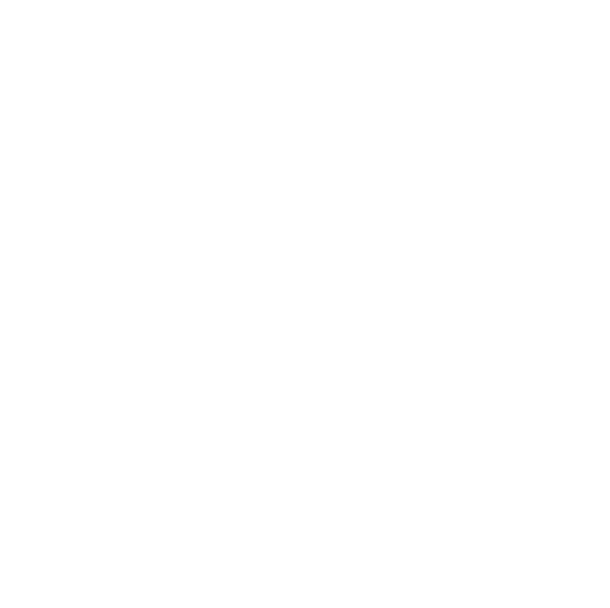
The iron age hill fort on Tap O'Noth is one of the largest in Scotland and consists of 21 ha surrounded by a stone balustrade. More than 100 raised fundaments of houses are registered there increasing between the parapet and a massive wall that protects the top of the Hill even more.
This wall of stone and wood that are more than 6 feet wide and 3 feet high, is locally vitrified – the stones are fused together by an intense, prolonged heat. The extremely high temperatures that were generated by the burning wood, did the surrounding stone melt, and this phenomenon has been observed on many forts.
©The Royal Commission on the Ancient and Historical Monuments of Scotland (RCAHMS), http://canmore.rcahms.gov.uk
|
|
|
|
|
|
|
At the end of the last ice age – 9,700 BC – intense solar storms struck the Earth with a devastating force: a fit of intense solar outbursts and its effect on Earth (Gold 1962, Pontificiae ACAD. Sci. SCR. Miscellaneous 25 159). A clay tablet from Sumer tells the story of a five-kilometre in diameter, mega fireball above Austria in 3,123 BC, its 'mushroom' shape seen far beyond the Levant was caused by an asteroid. Did this cause the glazing of landscapes and forts? Then, in the late bronze and iron ages, the a technique developed to construct works only possible with the knowledge of Greek fire, a napalm-like oil of naphtha, quicklime, sulphur and saltpetre employed as a chemical weapon that likely was also used to strengthen forts and towers by glazing the stones or by burning in a glass paste. Stones used consisted of granite, basalt and Gneiss (from old high German gneistan = twinkle), materials that crystallize at 650 °C and between 1050 and 1235 °C melt and even out or become smooth. In Peru and Scotland (60 of these forts!), in Malta and Portugal, France, Iran and Turkey to the ziggurats of Iraq one finds the ruins of these structures and walls are covered with vitrified glass, a glazed stone. Read more on the website http://secretsofthesunsects.wordpress.com/2011/12/05/incan-vitrified-stones/
Naturally formed landscapes like those in Turkey, the Middle East and Mesopotamia originate from volcanic or obsidian glass, as in the Egyptian desert a meteor blast just above the sand melted Dessert glass. Similarly, near Mohenjo-Daro and Harappa in the Indus Valley where Sir John Campbell began excavations in 1921 of streets, houses, furniture and people were found fully vitrified and with a higher radioactivity. This glass looks very similar to Trinitite, the vitrified residue found in the desert after the 1945 Trinity nuclear tests. How it happened remains a mystery, but the Indian epic Mahabharata from the 9th or 8th century BC talks about doom and destruction: "(it was) a single projectile saturated with the power of the Universe. An incandescent column of smoke and flames. as bright as the thousand suns rose up in all its splendour... ".
Or, consider the black Moldavite, created by a meteor impact during the Tertiary and early Pleistocene between Nürnberg and Stuttgart, Germany with its glass stray field in Moravia and Bohemia or the similar Australian field in Southeast Asia that runs about Indonesia, the Philippines and China where Tektites formed by a meteorite impact the melting of the Earth's crust about 0.77 million years ago.
The archaeological site of Qantir/Pi-Ramesse allows further insight into the glass making practice during his reign in Egypt: this glass did not exist as a simple mixture of quartz flour and plant ashes, but also from the material of melting pot, waste from stone tools used to crush materials into finer substances, new kilns and furnaces, the essentials. In the southern part of multifunctional work centres were rooms for high temperature technologies such as the melting of gold and bronze, glass and faience, also found were various crucibles and casting moulds with blue, turquoise, transparent purple and red glass and recycled glass. Chogha Zanbil's excavations, built around 1250 BC, in current day Iran, discovered sticks of glass made of white and black spirals around a metal core (core formed), inside a niche of wooden frame of a window.
The ziggurat’s top layer of stones were glazed blue. Around the year 2000 B.C. temple towers began to be built to link heaven and earth. The towers were very large, pyramid-shaped structures on top of which the temple was built. The ziggurats were built of mud bricks with 3 to 7 terraced levels. The Mesopotamians believed that these pyramid temples connected heaven and earth. In fact, the ziggurat at Babylon was known as Etemenankia or "House of the Platform between Heaven & Earth". The ziggurats were often decorated with pillars and other ornamentation.? As priesthood developed, the temple became the center of religion and learning Each city had its own patron god or goddess who owned everything and everyone in the city. Each inhabitant was expected to sing hymns, say prayers, make sacrifices and bring offerings to the ziggurat.
Around 600 BC, there were two types of ovens: one called the “furnace with a floor of eyes” or holes in the floor used for adding fuel to the melting furnace with a bow. Later ovens were stacked on top of each other; this three-oven system was used in Europe. During the Byzantine Empire, the demand for glass was growing and the furnaces grew in size while nine tons of heavy glass tiles melted in situ by furnaces and after it cooled these enormous glass slabs were smashed and traded in chunks as crude raw material. Tank furnaces have been found in the ground in Israel, 17 at Bet Eli'ezer and 3 at Apolonia. In 2003, in Egypt at Beni Salama a tank furnace was found with slabs from 15 to 20 tons. Even the primary glass for the manufacturers of the first stained glass windows by Jarrow, England came from the Near East.
|
|
|
|
Transparent glass is used by the Phoenicians for mirrors with a thin metal layer on the backside.
Glass made with all those rituals is clearly the work of alchemists. The Danish scientist Ingeborg Hammer Jensen noted in her book Die älteste Alchymie from 1921: "the old alchemists have [...] the astrological theories known, but they have these just rhetorical used, without granting them important for alchemy; only on one point: that certain acts on certain days and should be made at certain times, it seems the Alchemy of glass".
According to the book Artificial and Natural Glass in Mesopotamia and Egypt-Glassmaking in Ancient Mesopotamia (The Corning Museum of Glass, 1970 reprint): around 1,400 BC glass makers moved the trade and its creators to Egypt, where glass later developed as a stand-alone technology where it was made and in the primary factories of the Phoenicians who traded and sold to secondary factories where the ingots were processed into frit to be used in a variety of different techniques .Now the former Bodrum castle in Turkey, is The Bodrum Museum of Underwater Archaeology its display of a 1300 BC shipwreck from coast of Uluburun includes ingots of metal and “blue glass” for faience or glass inlay alongside commodities like unworked glass, beads and assorted recycled lamp glasses on board as recycling glass avant la lettre.
|
|

|

|

|
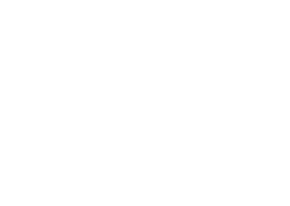
Necklace of casted blue glass beads covered their golden sheaths, Mycenaean, about 1400-1300 BC; from Tomb 4, Ialysos (modern Triánda), Rhodes, Aegean Sea.
©The British Museum
|
|
Glass making began with the imitation of Lapis Lazuli a furnace-made form called uqnû kuri. According to Samuel Kurinsky in his article Glassmaking -A Judaic Tradition, Part 1 – The Biblical Period (1991) the Egyptians had no word for glass but used the Akkadian word Zakû meaning ' transparent ' which appears on a clay tablet excavated in the 17th century BC at Tell Umar in ancient Babylon. The 3,500 BC beads were created using core form techniques with colored glass rods, formed around copper rods covered with clay or calcite.
In the 2nd half of the 2nd millennium, small cast shapes such as stamps, coins, weights, counters and sculptures, pendants alongside shapes for inlays and architecture decoration were manufactured. Unfortunately images were not available; please see website link of the Metropolitan Museum of Art (NY) http://www.metmuseum.org/toah/works-of-art/57.80.12 , to see the unlikely beauty of this ivory panel inlaid with glass, of a woman at the window, from the 9th-8th century B.C., probably from Syria. Under the reign of Sargon II in Assyria around 700 BC for the first time hollow, transparent glass is molded and polished.
|
|
|
|
|
|
|
Ornaments and jade funeral suites for the nobility and the Emperor and his family were already made in 2,000 BC, however, about 200 BC, jade was replaced by flat glass as it was considered more precious than jade. http://en.wikipedia.org/wiki/Jade_burial_suit
In Mesopotamia, 3,300 years ago, recipes for glass and furnace building were recorded in cuneiform on clay tablets. These tablets were copied and circulated. From the Persian Empire of the Achaemenid Empire, a clay tablet in the Corning Museum of Glass collection, 2,700 years ago delivered secret instructions on how to build a furnace and make glass: describing this auspicious day when they were able to build the foundation for a furnace; practice the necessary rituals and lift a glass of liquid butter with honey and, how to collect the best poplar wood in July and August to fire-up the oven from embers.
The Corning Glass Museum publication says: "…If you want to produce zagindurû-colored [greenish type of lapis lazuli] glass, you finely grind, separately, ten minas [about one pound] of immanakku-stone [sand], fifteen minas of naga-plant ashes, and 1 2/3 minas of 'white plant.' You mix these together. You put them into a cold kiln which has four fire openings, and arrange the mixture between the four openings… You keep a good and smokeless fire burning until the glass glows golden yellow. You pour it on a kiln-fired brick and this is called zukû-glass.
You place ten minas of “slow” copper-compound in a clean dabtu-pan. You put it into a hot chamber kiln… You crush and grind finely ten minas of zukû -glass. You open the door of the kiln and throw the ground glass upon the copper compound…When the glass assumes the color of ripe grapes, you keep it boiling for a time…After it has become yellow [hot], you observe some drops forming at the tip of the rake. If the glass is homogeneous, you pour it inside the kiln in a new dabtu-pan, and out of the cooled-off kiln emerges zagindurû-colored glass.”
From the book, Lost Discoveries: the ancient roots of modern science-from the Babylonians to the Maya by Dick Teresi explains that Sumerian glass makers (and later the Babylonian and Assyrian) sacrificed human embryos so that the goddess of the Earth Ishtar or Astarte would take no revenge on removing minerals from its ' uterus '.
|
|
|
|
Egyptian Blue pigment composed of ground glass with copper oxide was used for the first time in the 4th Dynasty (2575-2467 BC), after which this secret 4th century AD recipe for the first synthetic pigment was lost.
The portrait of Sir William Butts (1540-1543) by Hans Holbein the younger (1497 -1543) in the National Portrait Gallery in London displays the earliest use of smalt and can be viewed on-line http://www.npg.org.uk and in person, in Room 2 at Montacute House, www.nationaltrust.org.uk/montacute-house.
|
|
|
|
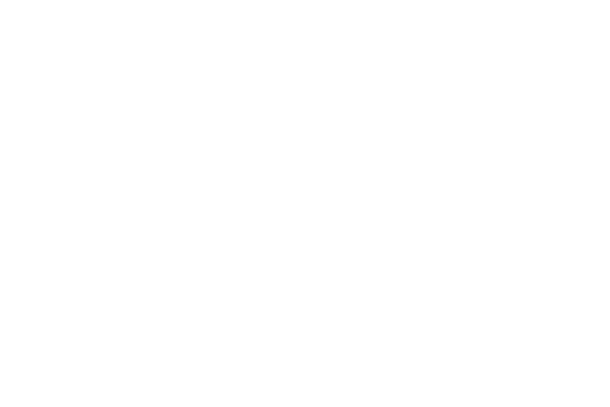
AI Wei Wei, 5,000 kg Sunflower Seeds, 2010; porcelain sunflower seeds, dimensions variable. Courtesy Faurschou Foundation (2 x performed in exhibition). ©The Pont, museum for contemporary art, Tilburg, the Netherlands. Photo Peter Cox
|
|
|
|
|
|
|
Glass enamel is made by combining glass powder on a substrate through firing, when the glass powder melts, a layer is formed on the ceramic, porcelain, metal or glass or it can be melted in an open or enclosed, metal cloisonné structure. The ancient Egyptians applied enamels to pottery, stone objects and sometimes jewellery.
The ancient Greeks, Celts, Georgians and Chinese used enamel also on metal objects. Bactria, midway on the Silk Road toward China, is a town in the Greek-Bactrian Kingdom between 250 and 125 BC, in the eastern-most part of the Hellenistic world (now Afghanistan), from which this Indo-Greek Kingdom developed through the year 10. A significant amount of glass has been recovered: a blown drinking glass with coloured enamel from the Greek period. From the 3rd century, gold and silver chandeliers in ceramics and glass.
Beginning in 1300, yellow silver stain was developed and in 1450 Jean Cousin-red for stained glass painting. Opaque glass enamel was processed by techniques operative in the 14th and 15th centuries this included on the glass as it was blown and used in Venice with indirect knowledge of enamelled Syrian glass. At the same time, the ground transparent colored glass mixed with a flux formed the enamels in the 16th century for the stained glass painting.
NB: A stain is a discoloration that can be clearly distinguished from the surface, material, or medium it is found upon. They are caused by the chemical or physical interaction of two dissimilar materials. Staining is used for biochemical research, metal staining, and art (e.g., wood staining, stained glass). Wikipedia
A porcelain enamel coating consists of glass-like properties. Check out http://www.aiweiweiseeds.com/about-ai-weiweis-sunflower-seeds how Ai Wei Wei (Beijing, 1957) with 1600 people produced millions of sunflower seeds shown in London and De Pont in Tilburg, the Netherlands.
Each seed the Sunflower Seeds is individually designed and painted by specialists working in small-scale workshops in the Chinese city of Jingdezhen. The 100 million seeds form a landscape with a beautiful tinkling sound as the visitors could walk through this floor installation as in the Tate Modern in London (2010) was possible.
NB: Vitrious enamel: Vitreous enamel, also called porcelain enamel, is a material made by fusing powdered glass to a substrate by firing, usually between 750 and 850 °C (1,380 and 1,560 °F). The powder melts, flows, and then hardens to a smooth, durable vitreous coating on metal, or on glass or ceramics. The term "enamel" is most often restricted to work on metal, which is the subject of this article. Enameled glass is also called "painted ". Fired enamelware is an integrated layered composite of glass and metal. The word enamel comes from the Old High German word smelzan (to smelt) via the Old French esmail.
Fjoezzz 17 # 2-2 0 1 2
Translation Erica H. Adams
|
|
|
|
|
|
|


